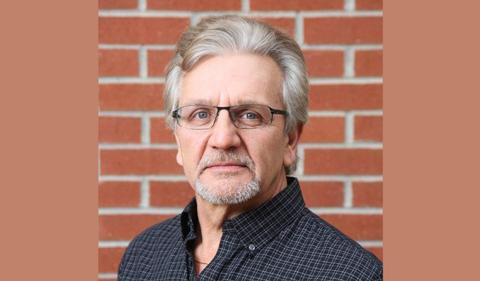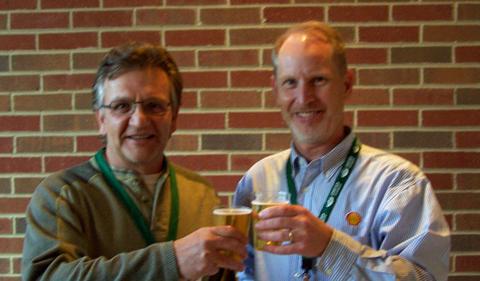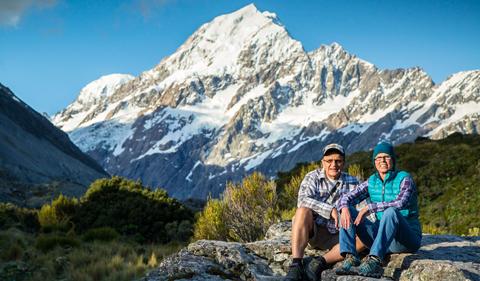
Notable Alumni | Eric Bikis Knows How Water Works—for the Future & in the Past

Editor’s Note: The College of Arts & Sciences Notable Alumni Awards (opens in a new window) honor alumni for broad career accomplishments, commitment to community service, and valuable contributions to Ohio University and the College of Arts & Sciences.
Eric Bikis ’76 Mathematics, ’78 M.S. Geology
Eric Bikis started in petroleum but then gravitated into the water resources industry, even traveling the world to study how ancient people handled water. He has learned that water is the most valuable and essential fluid on the planet.
Now after three decades of experience of water resource consulting in beautiful places around the world, he resides in Durango, Colo., where he is actively living the dream. His career path started with 13 years of oil and gas exploration (geology and geophysics) in North America.
“In 1978 after receiving a B.S. in Mathematics and an M.S. degree in Geology with an emphasis in Hydrogeology, I left my native state of Ohio and moved west to Colorado to work for Conoco Inc. As a geophysicist with Conoco, I successfully explored for oil and gas within geologic provinces in the lower 48 states. The industry and my job were exciting and fulfilling. I was exposed to many people, places, and technical methodologies that many other jobs would not have afforded,” Bikis said.
“Despite the satisfaction that the petroleum industry provided, my heart was still in the water world. In 1989, I enrolled in a program in the Environmental Engineering Department at the Colorado School of Mines in Golden, CO to become current on cutting edge technology and the regulatory environment. Next, I went to work for a water resources engineering firm in Denver.
“As a professional consultant, I conducted water resources work including water supply planning and development, well drilling and design, hydrology, water rights analyses (Yes, west of the 100th meridian, water has ‘rights’ that are critical to ensuring a supply can be developed!), water quality evaluations, water measurements, and other. Clients included many entities from both the public and private sector such as ski resorts, towns, metropolitan districts, ranchers, farmers, irrigators, Native Americans, state and federal agencies, and individuals.”
“In addition to conducting modern water resources investigations, I was also part of a multi-disciplinary team that conducted paleohydrological studies (defined as ‘the study of water use and handling by ancient people’). This work took me to Peru to study and document the Inca’s water use at Machu Picchu, Tipon, Moray, and Chokepukio. They were marvelous engineers. Other studies were conducted at Chaco Canyon and Mesa Verde National Parks where five ancient reservoirs were identified and documented for the U.S. National Park Service. One of these, operated from 750 to 1180 A.D., was registered by the American Society of Civil Engineers as one of 200 Historical Civil Engineering Landmarks. Several books have been published.
“In 1995, my wife and I moved our two sons from Denver to Durango, where I established a satellite office for my employer. I still live in Durango, and in 2006 I founded my own company, Bikis Water Consultants (opens in a new window), and was successful in solving water resource problems for many loyal clients. Then, in 2015 it was time to plan for the future of my loyal staff and clients so I agreed to merge with a well-established western Colorado engineering and survey firm, SGM Inc. (opens in a new window) This was not the easiest course for me to choose as it has taken a lot of effort to ensure my and staff clients were well-meshed with SGM, but it was the right choice. Given the loyalty shown to me by them over many years, it is gratifying to have given back to them.”
Bikis also returned to Ohio University for a handful of years early after graduation to recruit top candidates for employment at Conoco Inc. Later he helped found the Geological Sciences Alumni Board (opens in a new window) and enjoyed interacting with students, professors and alumni for several years. My education at Ohio University has been very useful in providing me with an exciting and gratifying vocation, and I am appreciative of those professors who provided me with some of the tools needed for a successful career.”
OHIO Memories
“I have innumerable special memories of my times at OU and continue to have fond thoughts of my experience there, including many classes, fieldwork, friends and colleagues, the learning atmosphere that Athens provides and, especially, meeting Linda, my wife of 41 years. No one special memory stands out on my long list,” he says.
“A few parting thoughts:
- To the university professors — You are critical to so many students. Teach them the fundamentals, how to think and solve problems, encourage creativity. And become instrumental in getting them jobs so that they can move forward and succeed! My thesis adviser, the late Dr. Moid Ahmad, had more students under him than any other professor in the Geological Sciences Department. Yet, he had time for all of them, and they all obtained jobs after college, regardless of aptitude. We “Moid Disciples” still marvel at the energy he had and appreciate what he did for us. It changed our lives.
- To the university administration — Make it your everyday goal to take administrative duties off of the professors’ shoulders so they can focus on the students and research. A university is a big business with a lot of red tape that is not conducive to learning. Your job is to insulate the students and faculty from this reality to the greatest extent possible. Their success depends on it.
- To the students — You are young and full of promise. Work hard and learn. Choose a major that excites you — make your vocation your occupation. A career is a marathon not a sprint. When you cross the finish line 40 years or so from now, you will feel good about the success you’ve had and the legacy you’ve left. And don’t be afraid of the uncertainty that the future holds for you! When my two sons were in the uncertain phase of their lives, I would hold up my cars keys and ask if they wanted to trade for their keys. A puzzled look followed because my car was more valuable than theirs. Then I’d say, ‘I’ll trade my life (and future) for yours. You have a lot of opportunity and promise ahead of you. Enjoy the ride.'”





